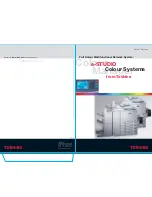
130
USING ACROBAT X PRO
Saving and exporting PDFs
Last updated 10/11/2011
using 16-bit bytes. ISO-Latin-1 is an 8-bit representation of characters that is a superset of ASCII. UCS-4 is a Universal
Character Set coded in 4 octets. HTML/ASCII is a 7-bit representation of characters developed by ANSI.
Use Mapping Table Default uses the default character encoding defined in mapping tables, which appear in the Plug-
ins/SaveAsXML/MappingTables folder. These mapping tables specify many characteristics of how the data is output,
including the following default character encodings: UTF-8 (Save as XML or HTML 4.0.1) and HTML/ASCII (Save as
HTML 3.2).
Generate Bookmarks
Generates bookmark links to content for HTML or XML documents. Links are placed at the
beginning of the resulting HTML or XML document.
Generate Tags For Untagged Files
Generates tags for files that are not already tagged, such as PDFs created using
Acrobat 4.0 or earlier. If this option is not selected, untagged files are not converted.
Note:
Tags are applied only as part of the conversion process and are discarded after the conversion. This is not a method
for creating tagged PDFs from legacy files.
Generate Images
Controls how images are converted. Converted image files are referenced from within XML and
HTML documents.
Use Sub-Folder
Specifies the folder in which to store generated images. The default is Images.
Use Prefix
Specifies the prefix added to the image file names if you have several versions of the same image file. File
names assigned to images have the format
filename_img_#
.
Output Format
Specifies the final format of images. The default is JPG.
Downsample To
Downsamples image files to the specified resolution. If you do not select this option, image files have
the same resolution as in the source file. Image files are never upsampled.
Convert PDFs to Word, RTF, spreadsheets or other formats
Use the Save As command to convert a PDF to Microsoft Word format, or Rich Text Format (RTF), a standard for
exchanging content between text-editing applications. The file you obtain when you export a PDF to Word or RTF is
not equivalent to the source file in the authoring application. Some coding information may be lost in the conversion.
You can also export a PDF to plain text or accessible text. Accessible text follows the reading order preference selected
in the Reading preferences, and includes comments and form fields in its output. Accessible text also includes some
formatting, such as line breaks. Any alternate text in the document tags is used in place of images and figures. Plain
text follows the structure order of text in the document and ignores all artifacts and figure elements in the conversion.
Hard hyphens are preserved, and soft hyphens are removed.
You can also export a PDF to a spreadsheet format for Excel.
1
Choose File > Save As > [Type] > [version], and choose a file format.
2
Click Settings, select the options you want, click OK, and click Save.
Additional resources
For videos and tutorials on saving PDFs to other formats, see these resources:
•
Exporting a PDF to Excel:
www.acrobatusers.com/tutorials/exporting-pdf-excel
•
Converting PDF files to other file formats:
www.adobe.com/go/lrvid_012_acrx_en
•
Converting scanned PDF files to other file formats:
www.adobe.com/go/lrvid_026_acrx_en
•
How to save a PDF with Acrobat JavaScript:
www.acrobatusers.com/tutorials/how-save-pdf-acrobat-javascript
Summary of Contents for 22020737 - Acrobat Pro - PC
Page 1: ...Using ADOBE ACROBAT X PRO...
















































